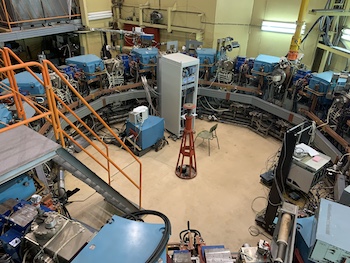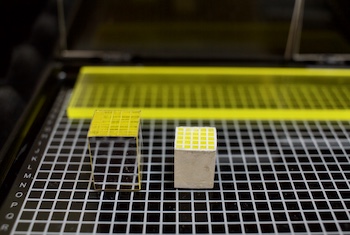29 February 2020
FOMOS-MATERIALS is actively participating in the ongoing at BINP SB RAS Conference of Instrumentation for Colliding Beam Physics. Besides interesting and comprehensive reports, Participants had a chance to see the VEPP-2000 - Electron-Positron Collider, that functions here at the Institute.  FOMOS Representatives did not come empty-handed - there was organized a small exposition of our scintillators GGAG:Се, GYAGG:Ce, Li2MoO4 and CaMoO4. I would like to point out that despite the topic of the Conference on Colliding Particles Physics, there is a delegation from the AMoRE collaboration. I should like to recall that this abbreviation stands for Advanced Mo-based Rear experiment.
FOMOS Representatives did not come empty-handed - there was organized a small exposition of our scintillators GGAG:Се, GYAGG:Ce, Li2MoO4 and CaMoO4. I would like to point out that despite the topic of the Conference on Colliding Particles Physics, there is a delegation from the AMoRE collaboration. I should like to recall that this abbreviation stands for Advanced Mo-based Rear experiment.  The purpose of these series of experiments is to search for neutrino-less double beta decay of molybdenum isotope (100Mo). And the global goal – is to understand why at the Birth of the Universe there was more matter than antimatter! That is, unlike Collider Physics where the particles are accelerated and then collide, in the AMoRE collaboration decays occur inside crystals (FOMOS produced and delivered 7.5 kg of isotopically enriched Calcium Molybdate for the first and second stage of experiments). As for Collider Physics, GGAG:Ce and GYAGG:Ce crystals were developed specially for the experiment at CERN (LHCb).
The purpose of these series of experiments is to search for neutrino-less double beta decay of molybdenum isotope (100Mo). And the global goal – is to understand why at the Birth of the Universe there was more matter than antimatter! That is, unlike Collider Physics where the particles are accelerated and then collide, in the AMoRE collaboration decays occur inside crystals (FOMOS produced and delivered 7.5 kg of isotopically enriched Calcium Molybdate for the first and second stage of experiments). As for Collider Physics, GGAG:Ce and GYAGG:Ce crystals were developed specially for the experiment at CERN (LHCb).  Since GGAG:Ce is denser than its yttrium fellow, it has a shorter radiation length (x0=1.59 g.cm-2) lower light output (41000 ph/MeV) and a slightly higher value of the slow component of decay time 28 ns (30%); 68 ns (52%); 168 ns (18%). GYAGG:Ce has the light output of 52000 ph/MeV, fast component - 36 ns (80%), slow - 97 ns (20%).
Since GGAG:Ce is denser than its yttrium fellow, it has a shorter radiation length (x0=1.59 g.cm-2) lower light output (41000 ph/MeV) and a slightly higher value of the slow component of decay time 28 ns (30%); 68 ns (52%); 168 ns (18%). GYAGG:Ce has the light output of 52000 ph/MeV, fast component - 36 ns (80%), slow - 97 ns (20%).